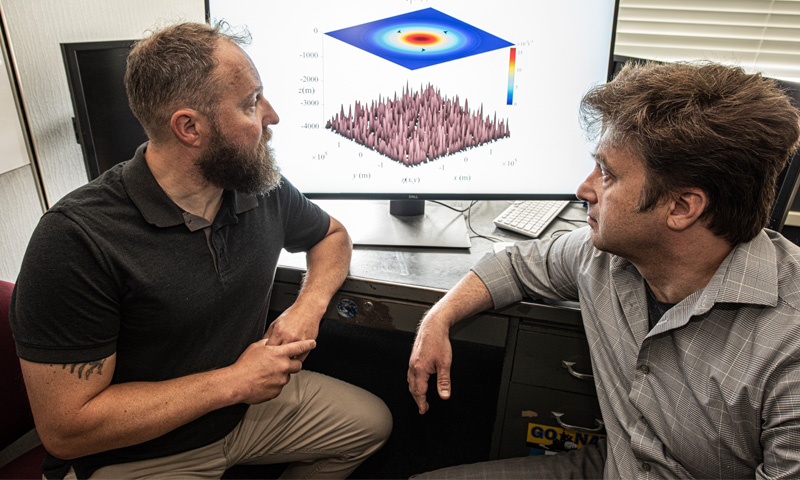The ocean is a dynamic enigma. Humans have strived to understand its many behaviors since the first ocean-going craft hit its complex waters.
One phenomenon that has stumped researchers for years is how swirls of circular currents multiple kilometers wide, known as ocean rings or eddies, stay intact. Ocean rings are critically important for transporting heat and nutrients throughout the ocean and can last anywhere from a few months to several years.
As detailed in the latest edition of the journal “Geophysical Research Letters,” it appears Naval Postgraduate School (NPS) Department of Oceanography doctoral student Larry Gulliver and Professor Timour Radko have cracked the code on exactly what makes some ocean rings last up to a decade while others dissipate within a few months: seafloor topography.
This new understanding of how the ocean floor impacts surface currents will improve complex, numerical models used by the Navy’s meteorology and oceanography (METOC) community to provide critical information to operational commanders.
“We need to remove systematic biases that numerical models have, and some of those are linked to the way models handle small-scale bottom topography,” Radko explains.
Eddies can create their own weather and wave patterns, and they can impact acoustics, among other things. The research, funded by the National Science Foundation (NSF), was significant enough to make the front cover of the journal, vol. 49, issue 5, with a computer image of the model created by Gulliver as the main visual.
“It’s like getting on the cover of Rolling Stone … You’re a rockstar,” Radko jokes. “[Gulliver did it] on his first try. This is his first paper as a lead author.”
Radko and Gulliver call their finding the “sandpaper effect” – a moniker that draws association with the small abrasive particles of sandpaper that can grind down much larger objects. In the same manner, the small-scale texture of the seafloor slows down currents near the ocean bottom, which improves the stability and longevity of ocean rings near the surface.
Scientists have been trying to figure out what makes large vortices stable and long-lived for about 50 years, but no one thought to look at the ocean floor’s small-scale topography because it seemed too far away to impact these ocean rings. Usually, topographic roughness is not even considered by theoreticians when looking at surface water activity.
“Now I have doubts [about current models],” Radko admits. “If this small-scale topography affects this vortex, it may affect currents, waves, and what not. I’m becoming skeptical of everything that assumes the bottom is smooth.”
Without accounting for small-scale topography, physics suggests that ocean rings should dissipate within a few weeks. This was tested out by old papers that didn’t account for the bottom roughness in their models. The NPS researchers realized that the key to the “perfect model” is to make topography as realistic as possible. They adopted the statistical representation of bottom roughness provided by actual echo-sounding systems. The oceanographers may not be able to measure every detail of the bottom relief in the entire ocean anytime soon, but they have a fairly good understanding of its statistical properties. The bottom roughness model in the Gulliver and Radko study mathematically represents what an average seafloor looks like.
“We borrowed this, borrowed that, borrowed the other idea, put it together and it worked!” Gulliver says. He and Radko still laugh remembering their surprise. “It was pretty quick, [but] I had to run a few more simulations to make sure.”
The researchers may describe their significant discovery as quick and easy, although it was anything but that. Four years of intense research, collaborations with five other institutions, varied research questions and modeling techniques … In the end, the duo validated their work through other models, confirming that small-scale topography indeed was the missing piece to unlock eddy longevity. Their discovery provides researchers and Navy METOC officers with one more piece to the complex puzzle of understanding how the ocean works.
Looking ahead, Gulliver is on track to complete his doctorate in December, and Radko has plans to work with the Naval Research Laboratory (NRL) to look at how the Navy’s Hybrid Coordinate Ocean Model (HYCOM) represents eddies. He is hopeful their research will help improve the accuracy of the model.
As Radko says, “Let’s get to the bottom of it.”


